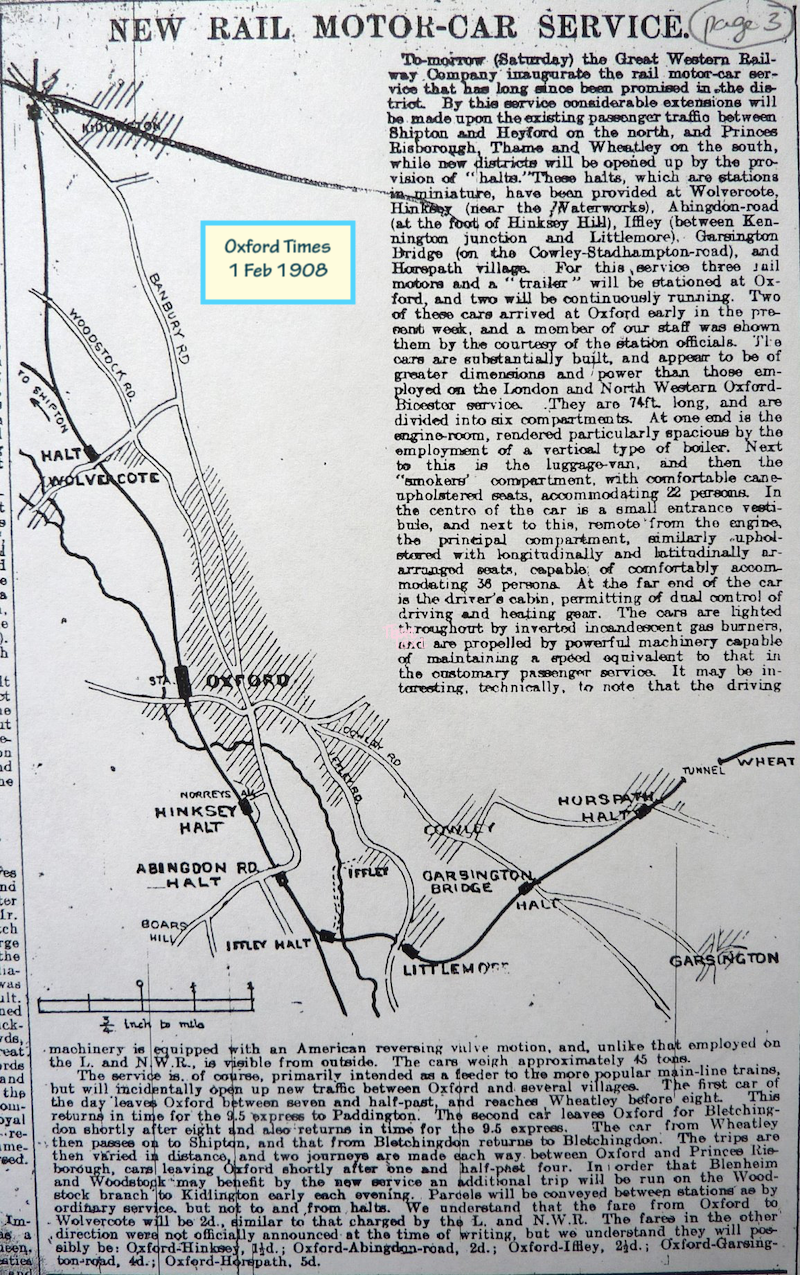Web Design: Geoff Roynon |
Last Update: 27th August 2020 |
This is the Local History page for the Horspath Archaeology & History Group.
This page, and pages linked to this one, will discuss the history of Horspath and the local area from ancient times up to the present.
The majority of the text and images making up this section were supplied by Brian Lowe.
1860 |
Decision taken to extend the Princes Risborough - Thame line further to link up with Oxford (Wycombe Railway Company). Surveying begins for the 12 mile line via Towersey, Wheatley, Horspath to Kennington to link up with the main line to Oxford at £10,000 per mile. All on Brunel's broad gauge of 7ft. track. |
1862 |
Two vertical shafts sunk for the tunnel between Littleworth and Horspath. Rowland Brotherhood was the contractor, and the 524 yard brick-lined tunnel completed in 1864. |
1864 |
Line opened on 24 Oct., 1864. |
1870 |
The entire rail track from Thame to Oxford lifted and relaid to the Great Western Railway gauge of 4ft. 8'5 inches - in the space of 14 days! |
1881 |
The tunnel was relined. A photograph shows a sign "Wheatley Tunnell", though the tunnel was actually all within Horspath Parish boundary. |
1907 |
GWR approve three additional halts on the line, known as "Motor Car Halts". |
1908 |
Horspath Halt opens on 1st Feb, 1908, on the embankment south of the overbridge on the green,
stated to be 40 yards from the later Halt of 1933. It had a platform 150 feet long and a small corrugated iron shelter 70 feet by 20 feet.
The other two halts were at Garsington Bridge (over the B480) and Abingdon Road at Hinksey. |
1915 |
Halt is closed as a WW1 economy measure on 22nd March. |
1921 |
Horspath Halt became the fictional halt known as "Camlet" in Aldous Huxley's novel "Crome Yellow", based on Garsington Manor. |
1933 |
On 5th June, a new halt was opened, 3/8ths of a mile from the tunnel, with a platform 100ft long and perched on the N. Side of the embankment, supported by trestles of railway sleepers. A tin "pagoda" was provided, (12 x 8ft) with a lamp and a double-sided sign portraying "HORSPATH HALT". Access was provided by a cinder path up the side of the embankment from the village green at the base of the bridge, with another lamp. |
1939 - 1945 |
The line played a crucial part in the wartime activities at Cowley; bringing the smaller crashed aircraft to MPRD for recycling, and taking new war materials (ammunition, scout cars etc.) from the factories at Cowley, and also bringing in casualty trains for the Military Hospital at Wheatley (Holton). The Horspath Home Guard cut slits in the pagoda for rifles as a makeshift defensive "pillbox"! |
1947 |
The line comes under the jurisdiction of British Rail on 31st December. |
1963 |
Last passenger train ran on 6th January, just 99 years after the line opened. The line remained open for occasional parcels traffic. |
1969 |
The track was lifted, except for the final stretch beside what was to become Unipart and into Pressed Steel and on to Oxford through Littlemore Station. (The last 200 yards up to the buffers today are actually along the parish boundary). |

Oxford Times Article - 1st February 1908